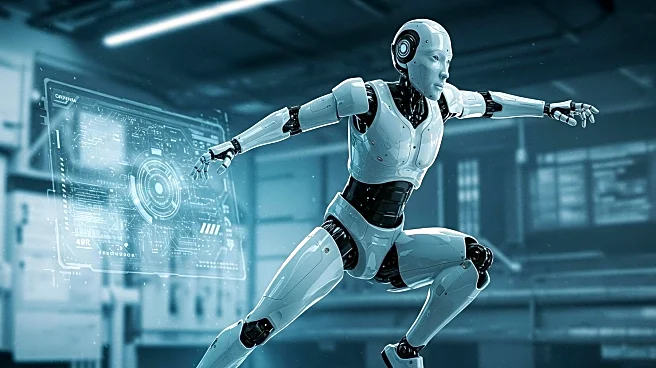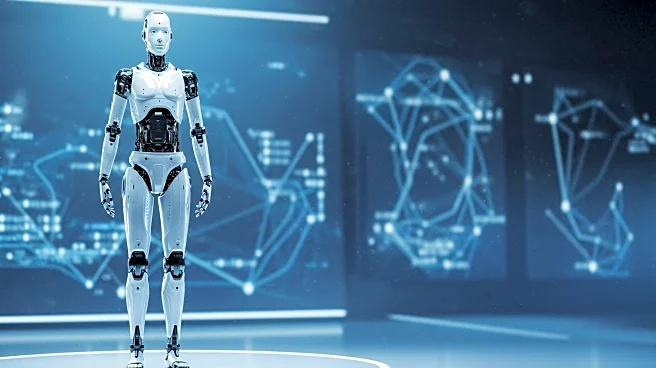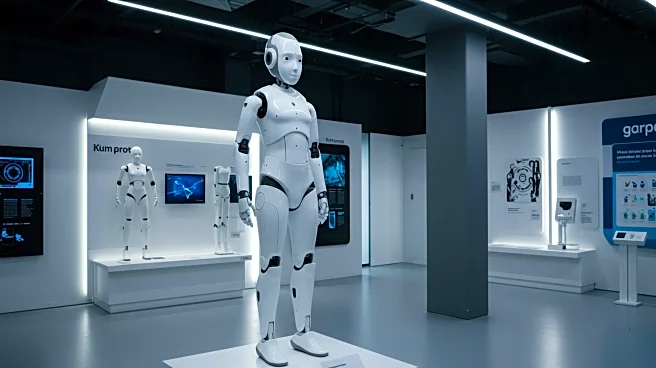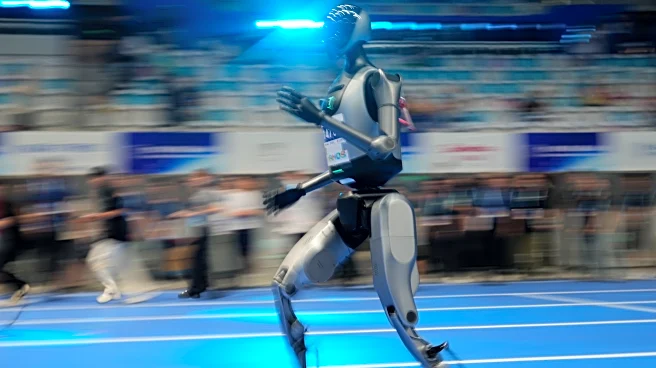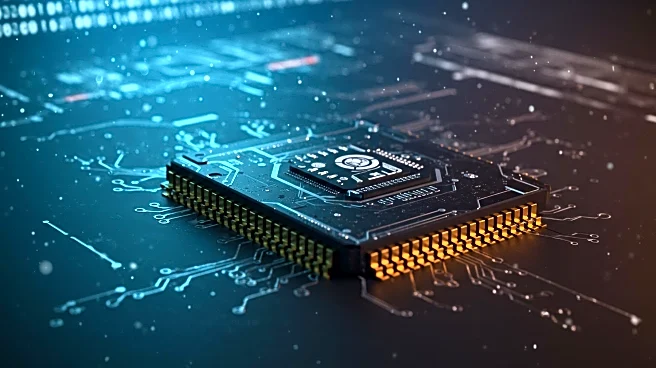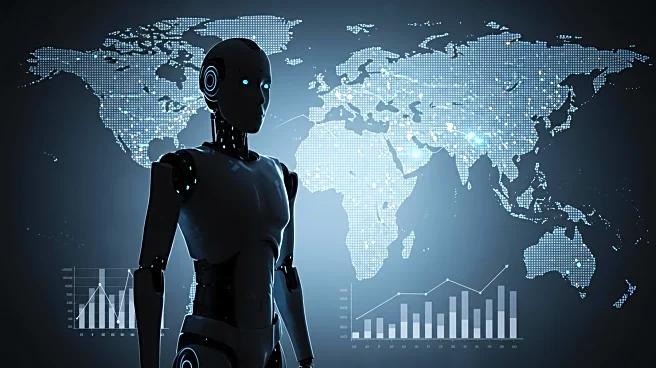What's Happening?
China recently hosted the inaugural World Humanoid Robot Games in Beijing, showcasing its advancements in humanoid robotics. The event featured various competitions, including kickboxing, athletics, football, and dance, with robots from leading Chinese technological universities participating. Despite the impressive display, challenges such as balance, battery life, and dexterous hand movements remain significant hurdles for humanoid robots. The games reflect China's push towards 'embodied AI,' a sector highlighted in the government's work report, aiming to position the country as a leader in real-life applications of robotics.
Why It's Important?
The event underscores the intensifying technological competition between the U.S. and China, particularly in the field of artificial intelligence and robotics. While the U.S. leads in frontier research, China's focus on practical applications could reshape AI's future. The country's investment in robotics, supported by substantial financial backing, aims to address workforce challenges posed by an aging population. Humanoid robots are seen as potential solutions for elderly care and factory work, highlighting China's strategic approach to integrating technology into societal needs.
What's Next?
China's continued investment in robotics and AI suggests further developments in humanoid technology. The country's efforts to deploy robots in real-world scenarios could lead to increased data collection, aiding in overcoming current limitations. As China positions itself as a leader in robotics, the geopolitical implications of its advancements may influence global technological dynamics. The U.S. and other nations may respond with increased investment and innovation in AI to maintain competitive edges.
Beyond the Headlines
The humanoid robot games highlight ethical and safety concerns regarding the integration of robots into daily life. Ensuring safe interactions between robots and humans, especially in uncontrolled environments, remains a critical challenge. The complexity of human-built environments and the need for dexterous robotic hands are significant barriers to widespread adoption. The event also reflects China's cultural emphasis on technology exposure for future generations, aiming to broaden horizons and inspire innovation.
